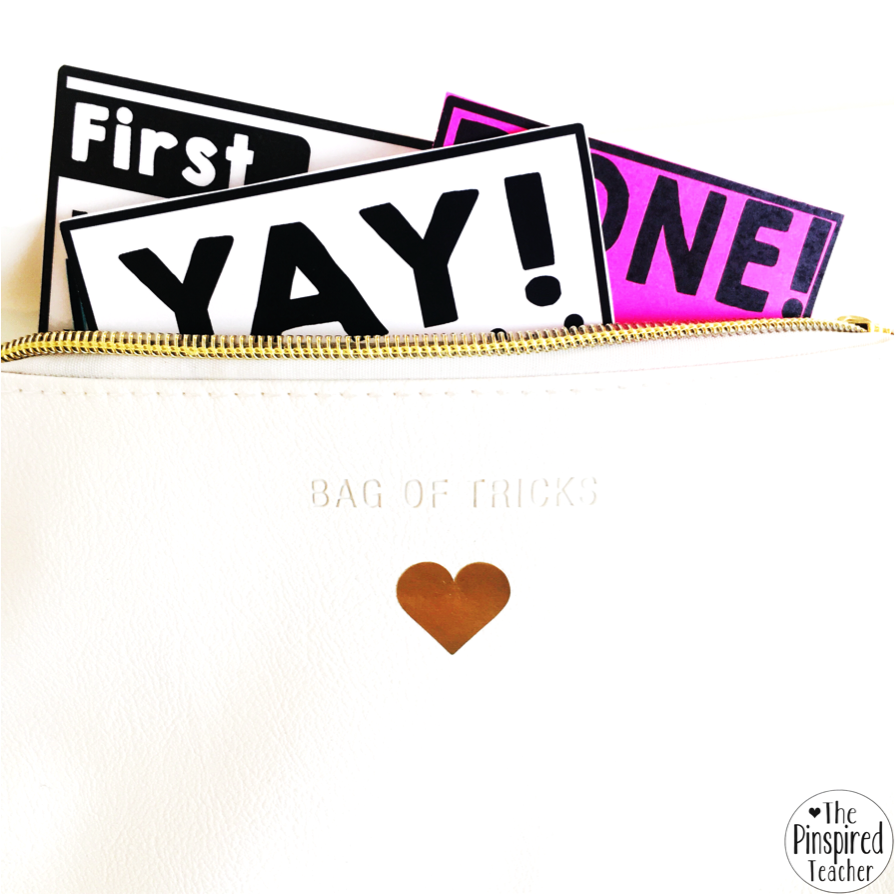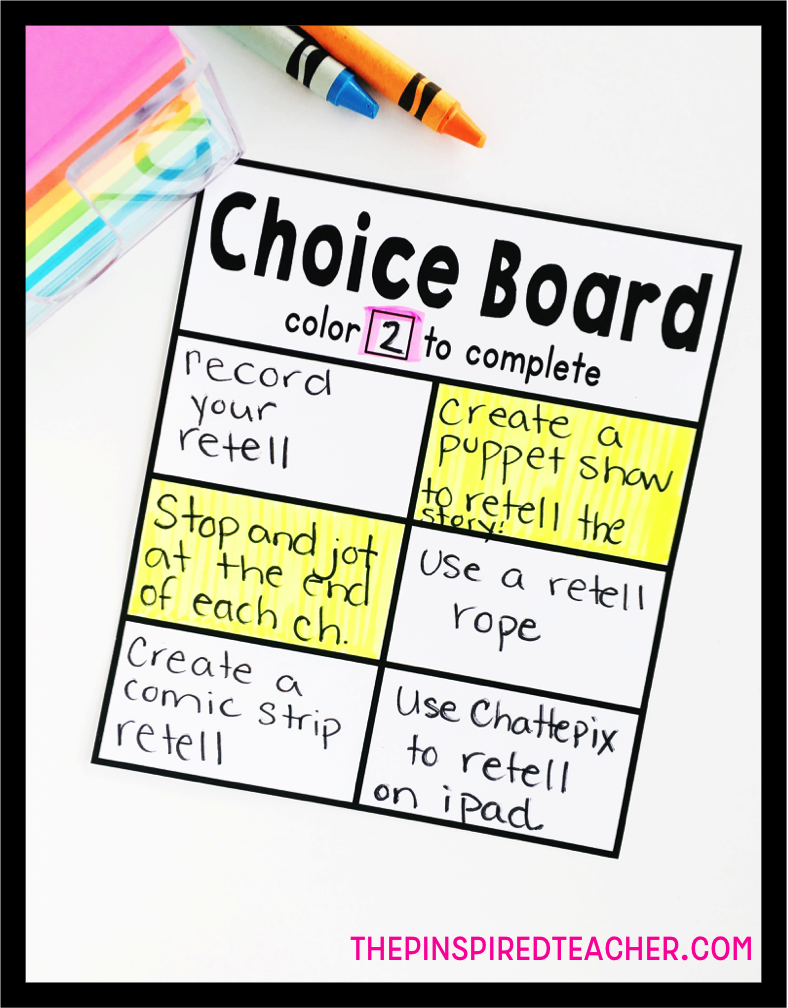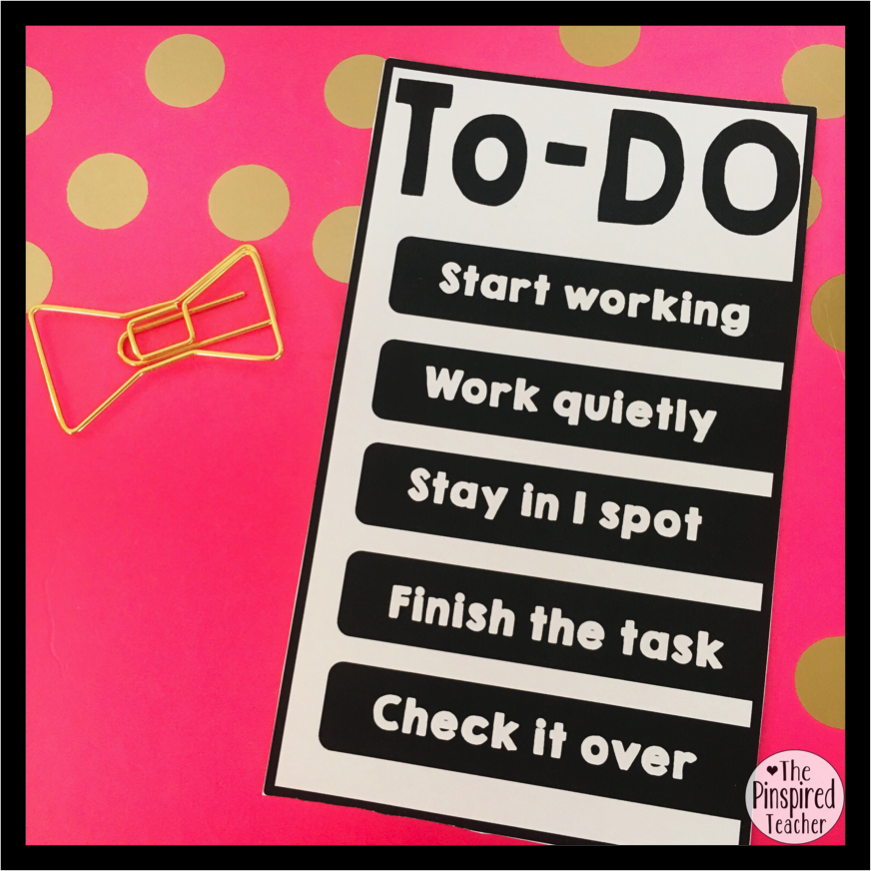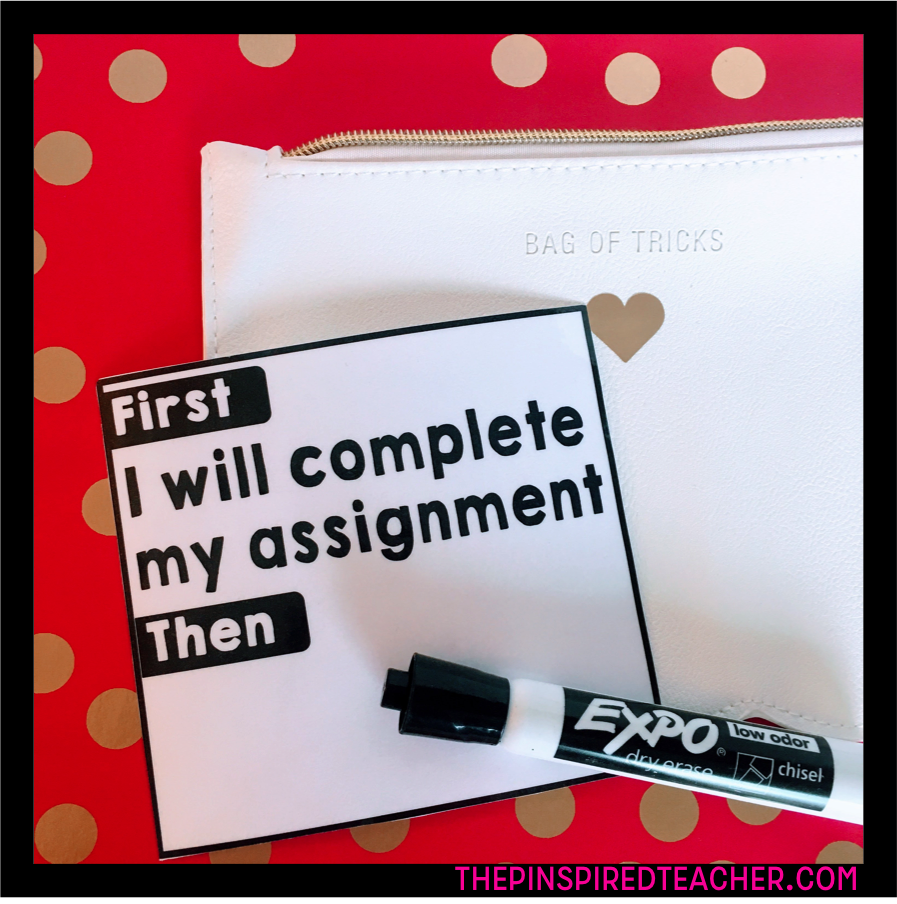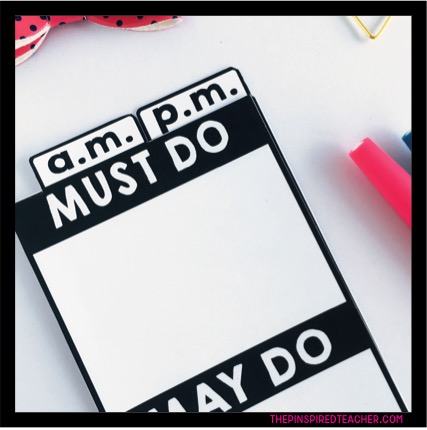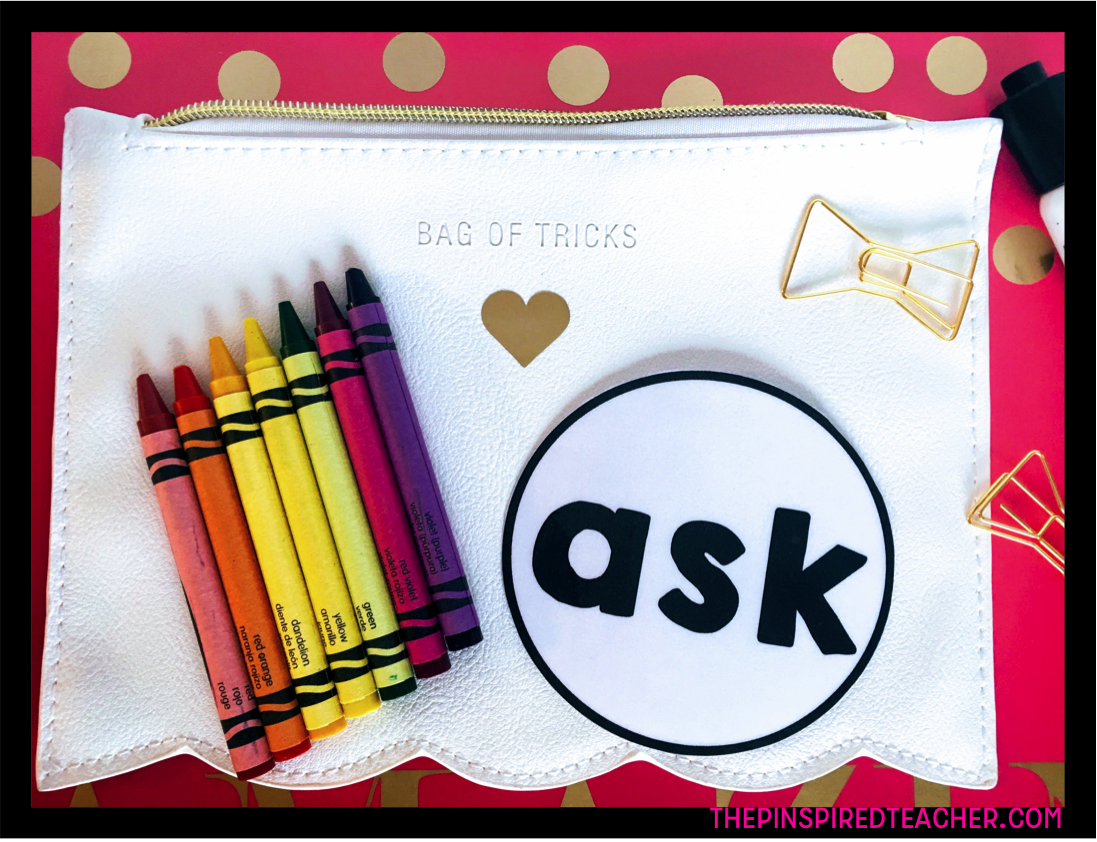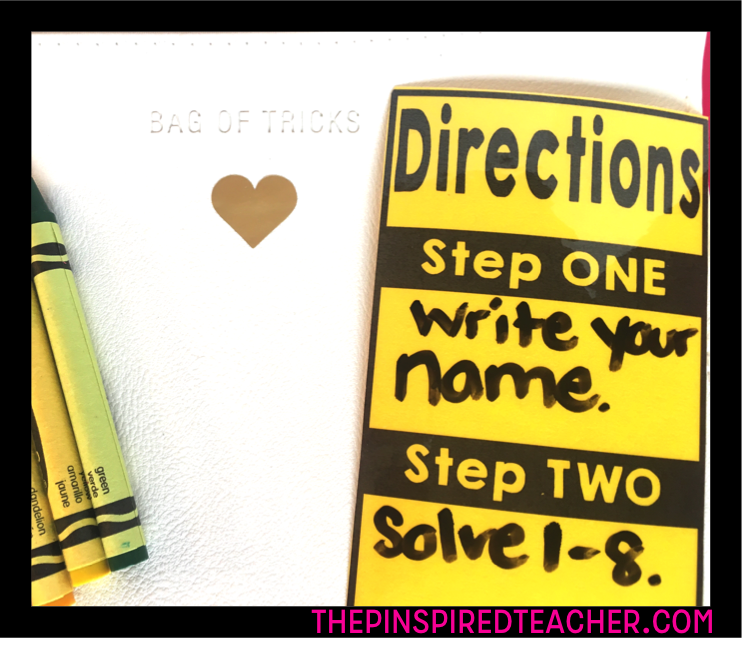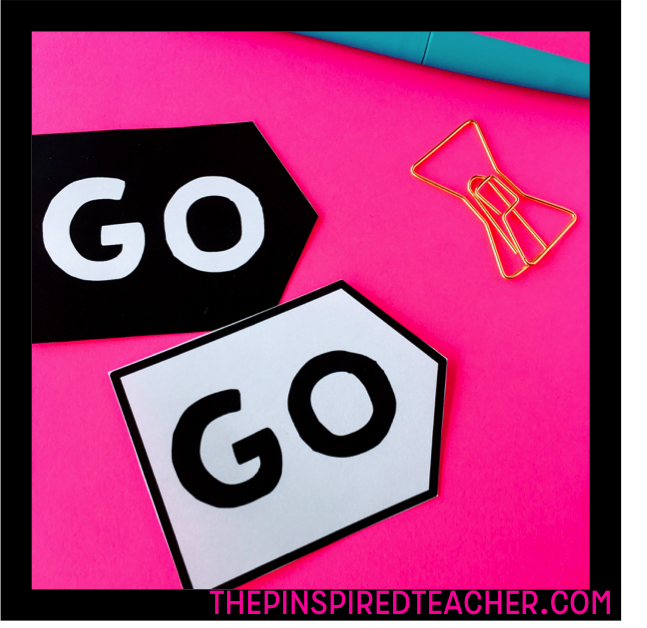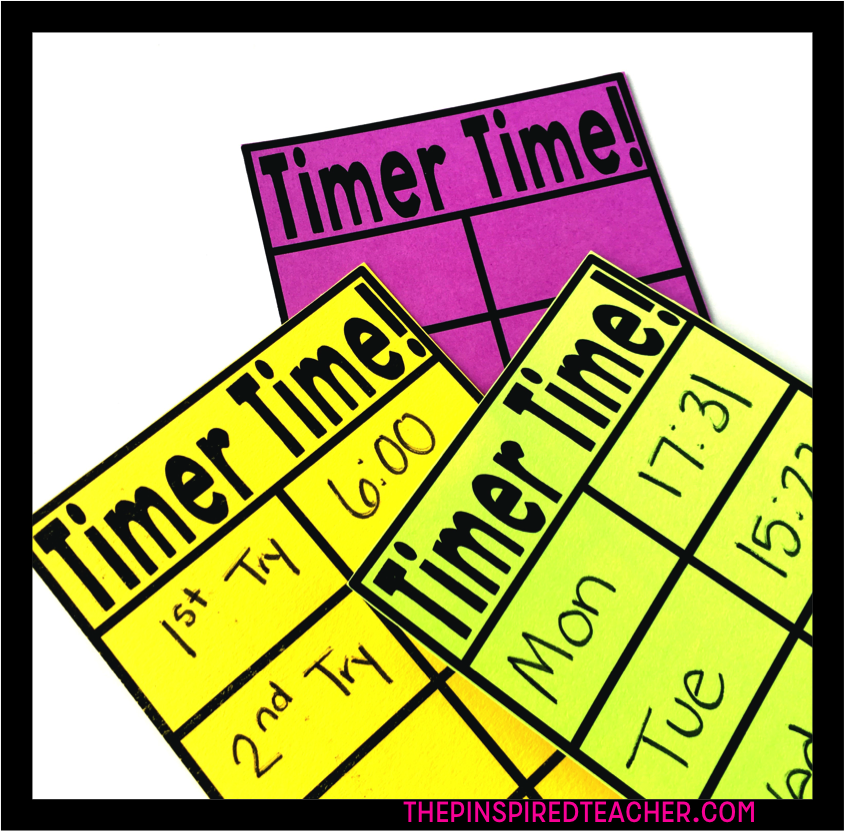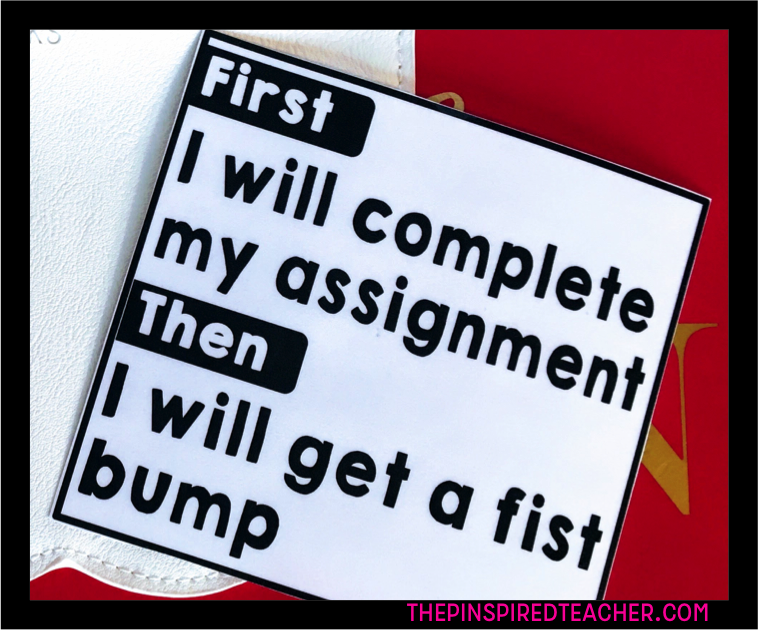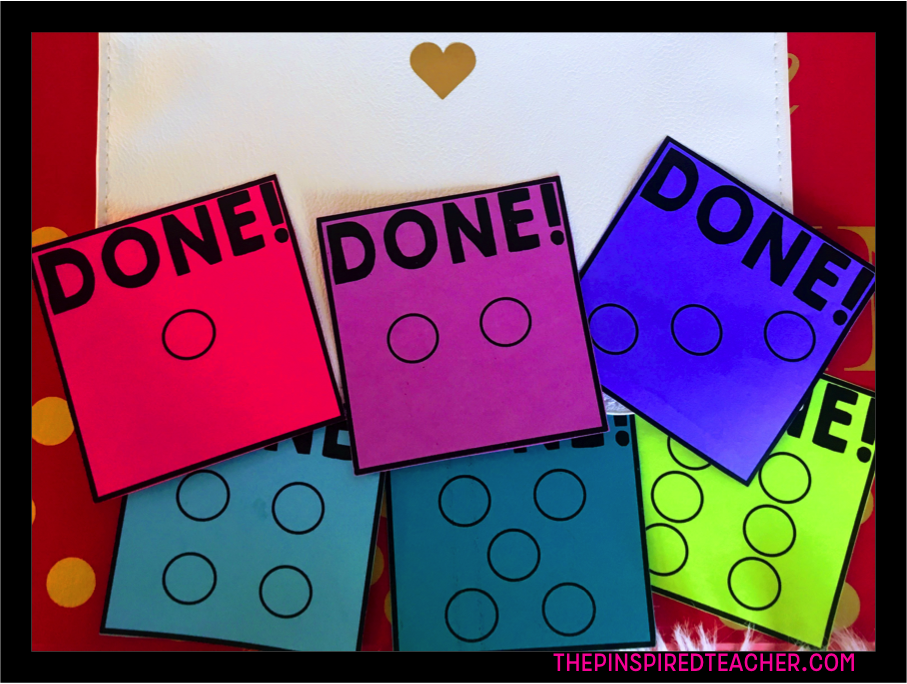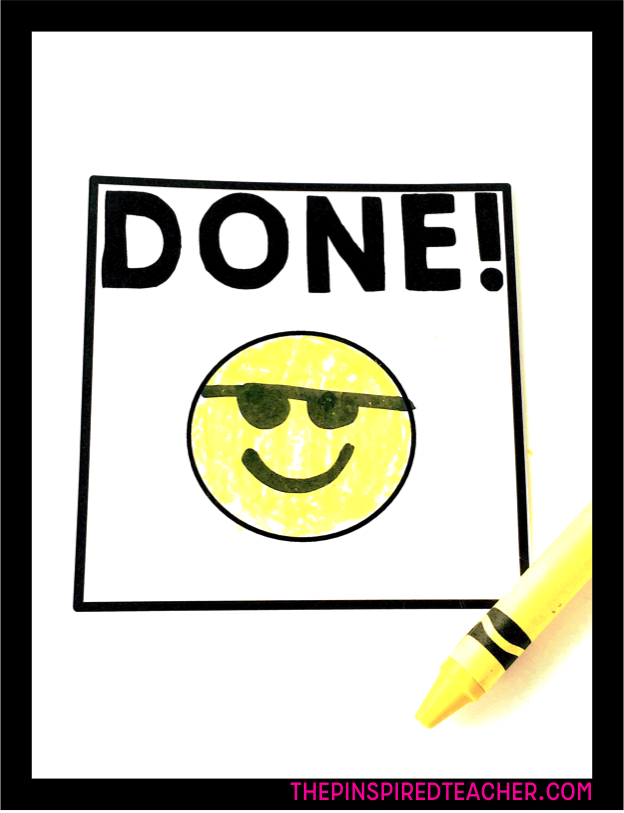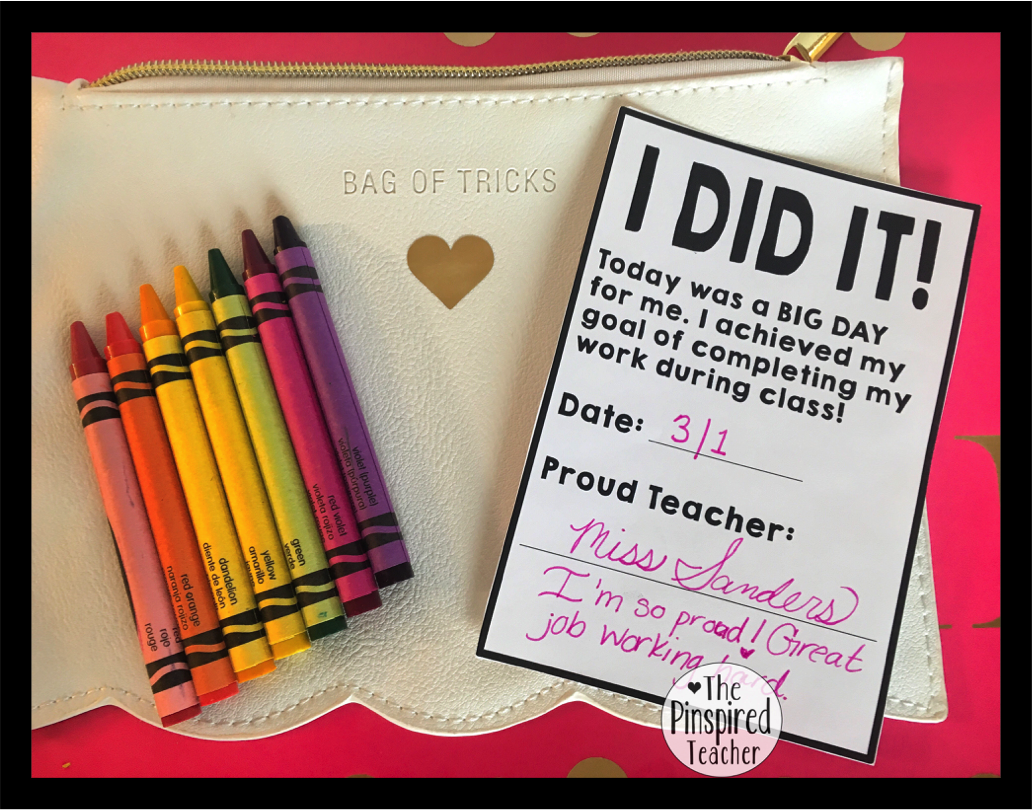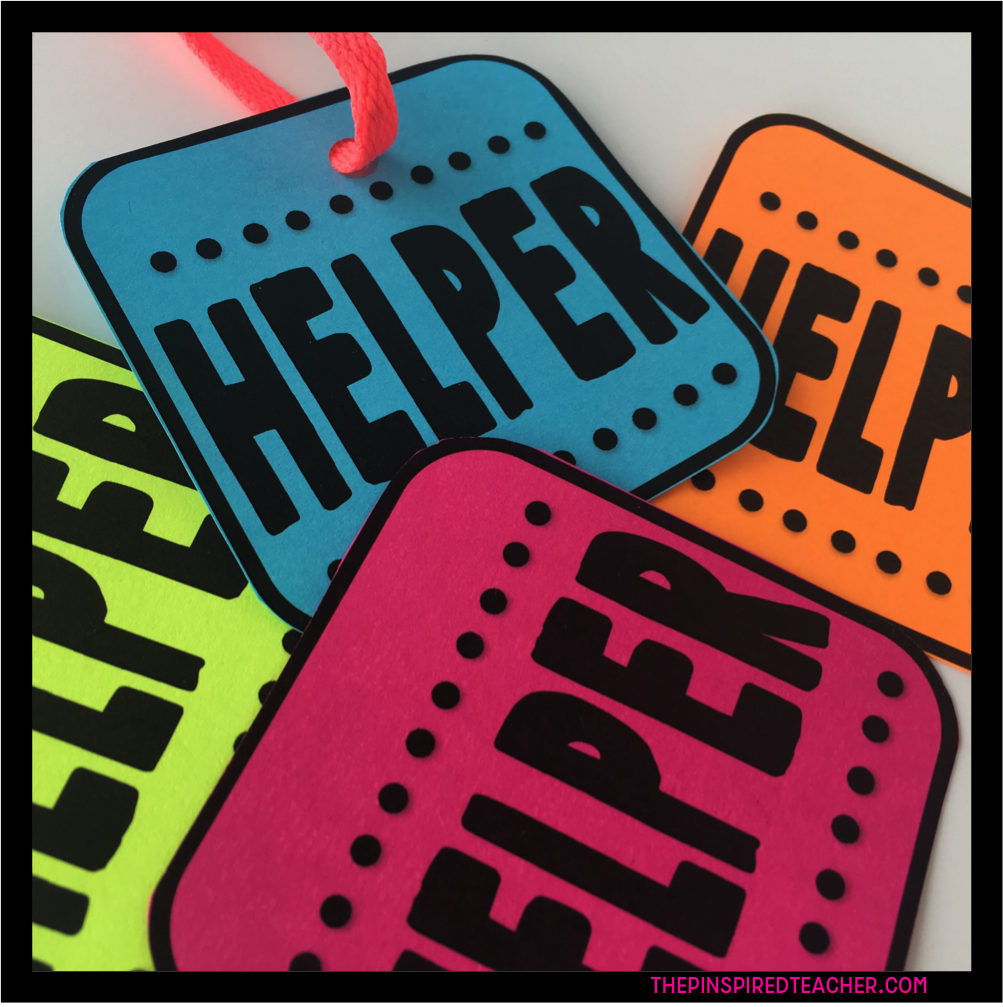Here are 50+ Quick Ways to Get a Student to Complete Their Work
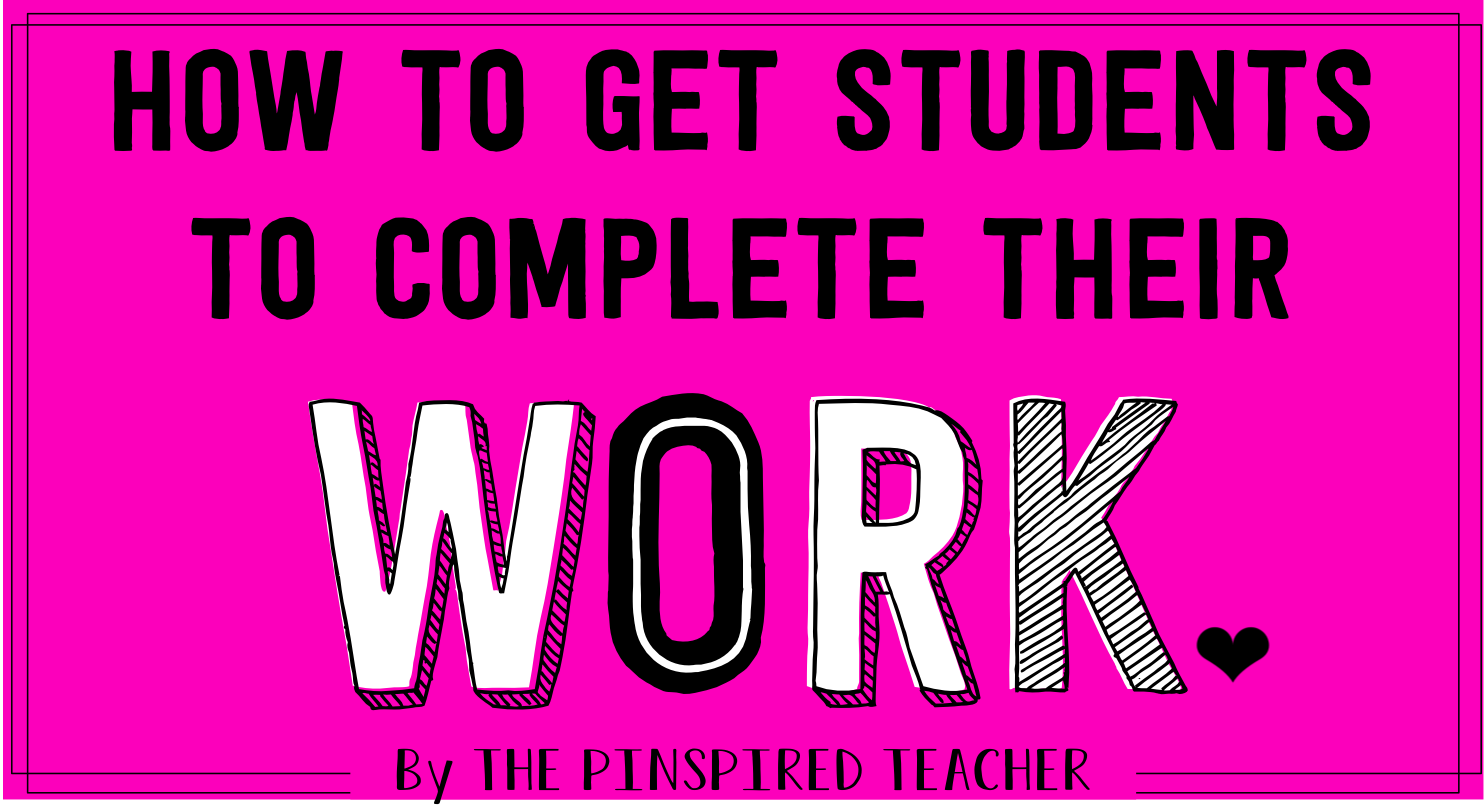
But first,
Most likely you stumbled on this mega post with a specific student in mind. Picture that student as you read this list to help you determine which strategies to begin with. Certainly, not all will fit your style or your student’s needs, but you should be able to find one miracle-working strategy whether your student is a perfectionist, has ADD, or just works slooooow. I have used a plethora of these strategies for students in my 2nd, 3rd, 4th grade, and 5th grade classroom.
As I created this post, I had one student in mind. A second grader named Ryan* who was a creative genius and shined in writing and reading. Every spare second he had he was making books for the rest of the class to read, but every day when it was time for math he’d mentally check out. My heart dropped the day I noticed that he’d only completed 4 math problems in 45 minutes. From that day on, I started experimenting with trial-and-error strategies that motivated him to get his work done in class and on time. Finally, by the end of the year, he was finishing his math work completely on his own. No reminders.
The resources and strategies shared in this post are not just words to me. Most of these strategies and resources I share are reminders of success stories from my own classroom. I hope they can be that for you too!
Feel free to save this list by Pinning it to your Classroom Management board on Pinterest.
Now, for the goodies…
Ready to see what’s inside by teacher bag of tricks?
Review the task
1. Is the work appropriate?
Is it too difficult? Is the length of time it will take to complete appropriate?
2. For your specific student, determine the level of difficulty in comparison to the student’s ability to complete the task’s requirements.
Teachers have the luxury of finding their own curriculum, especially with amazing places like TeachersPayTeachers. Keep your specific kiddo in mind when selecting resources.
3. Limit the number of problems to complete in a given amount of time.
An easy way to do this is to have the student do just the even numbers or just the odds. I use to have a problem with this, I would naively think- that’s not fair, why should this student do less work than everyone else? Then I remembered my behavior specialist told me to think about the end goal. My end goal was to see if the child understands the concept taught. Can I evaluate that with 10 problems instead of 20? The answer was yes for that task. Also, remember to gradually increase the number of problems as they progress.
4. Chop up the assignment.
The student completes a little bit throughout the day. 20 problems could be split into “10 Now, 10 Later.” Just make sure the students knows exactly when they will finish and follow through for accountability.
5. Allow for student choice.
Allow the student to do an alternative assignment. Any time you incorporate choice, the student’s motivation will rise. Don’t think “they win, I lose,” because you’ll forget the end goal- for them to show what they know. If you do find yourself falling into that thought pattern it’s okay and very normal, but can lead to an unnecessary power struggle in your mind or actually with the student. If that’s you, then give yourself a sense of control by presenting by pre-selecting the alternative assignments and allowing them to choose from a choice board. Over time, aim to get them back on the regular assignments.
6. Give shorter assignments, more frequently.
Think about how you could get a student to complete one whole project or assignment by just delivering shorter tasks. For example, have them write the introduction, grade it/confer with them, then assign another task.
7. Make sure the content is not too much to learn at one time.
#InformationOverload
This would happen to my student during math with multi-step problems. To support him I would reteach step 1 and 2 before he could successfully complete the 4 steps on his own.
8. Establish visual work expectations
Be clear about your expectations. The best way to do this is by making visual reminders. I do this by creating desk reminders for the students that I can walk by and tap. I also use them as my own reminder to praise the student when they are independently meeting the expectations. This also helps for that kid who wants to chat and/or leave their seat frequently. It sends a soft signal that you mean business.
9. Create a “First-Then” behavior contract.
For a student who needs help getting their work completed, this is gold.
First is completing the assignment. Then is the next step or reward for completing the task. To increase student motivation, do the least desirable followed by the most desirable.
10. Create a “Must-Do May-Do” chart.
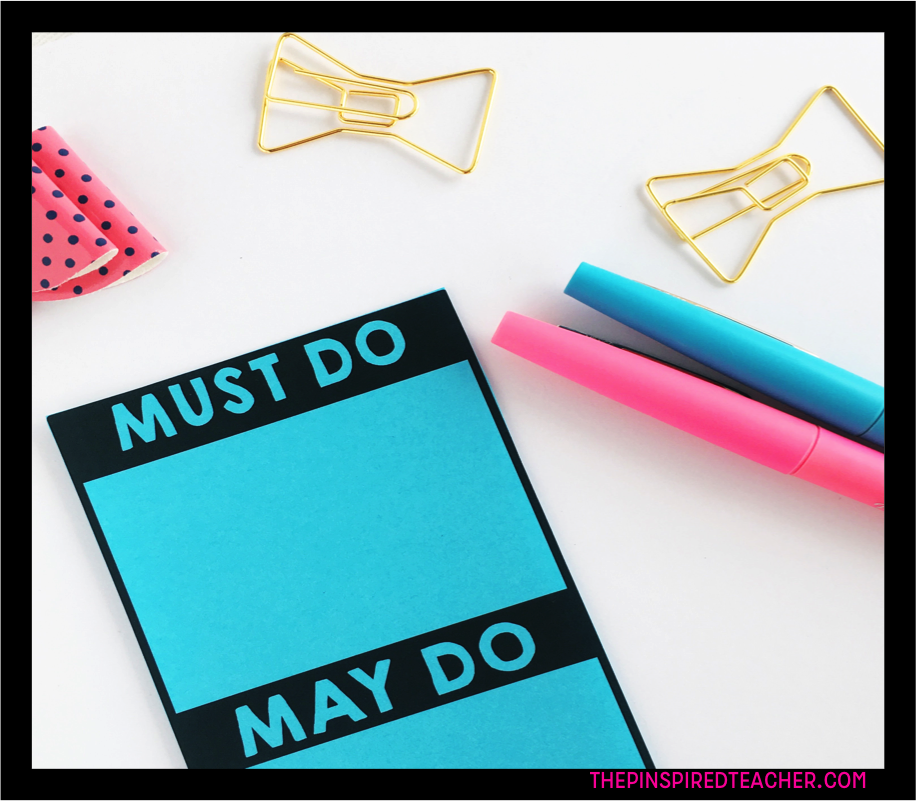
If you have a student always asks “Can I…[insert random request]” and is distracted by the desire of [random task], then a Must-Do May-Do chart is just what the doctor ordered. You may want to make one for the morning and one for the afternoon:
Help students get their work done when giving directions
11. Read directions aloud.
If you are passing out a worksheet that has directions on them, especially multi-step, consider reading them aloud for your student. I love combining this with the strategy of proximity. I pull my student up to my desk and I read only the directions aloud. This works best for a student who can do the work, just needs help focusing. It also helps for students who forget to read, then spends half the class avoiding the work because they aren’t sure what to do.
12. Repeat directions with the “Mirror” strategy.
I love to use the “Mirror” strategy (from Whole Brain Teaching) when I am explaining directions. First I give the directions. Then I put both hands up and say, “Mirror.” The class says, “Mirror” back and mirrors my body actions by also putting their hands up. Now the class has to keep their eyes on me because they are copying my movements. We make it fun and kind of like a game. (Do not move on until 100% of the class has their eyes on you and have their hands up.) Once I have their attention, I will repeat the directions, only this time I’m adding hand motions for each direction. For example, “First [puts 1 finger up], you need to write your name [pretends to be writing in the air]. Second [puts 2 fingers up], draw a circle in the middle of the paper [motioning drawing a circle]. Then write Martin Luther King Jr. in the middle [pretends to write in the air].
13. Turn and Talk
Use this strategy after giving directions. Have the students retell the directions to a partner then switch.
14. Student Model
Have a student model act out completing the assignment. You can do this when you are giving the directions, or in the middle of class so everyone can see the finish line.
15. Presentation is Key
Try to anticipate times when you know the assignment you are about to give is not going to be desirable for the student. When presenting the assignment, deliver it on a silver platter of enthusiasm. You can do this with your tone of voice and body language. You can also think about how you can make it look appealing. I recently gave my class a very challenging math task that was going to require a lot of perseverance. I made it appealing by calling them math detectives and putting on the Pink Panther theme song as they went off to solve. This is one of my go-to’s in my bag of tricks. Wrapping an assignment up in fun. It makes teaching boring content fun for you and the students.
16. The “Ask Me” strategy.
Give the student a visual reminder to ask for clarification about an assignment. This gives the student a safe, open line of communication. This for shy perfectionists who shut down because they want to do the assignment correctly, but are not sure what to do or how to do it. Don’t confuse this strategy for the “Ask 3 Before Me” strategy because your shy perfectionist may lack the confidence to ask his peers.
17. Give directions 3 ways.
Speak them, write them, and if you can act out or model them. This will appeal to your auditory, visual, and kinesthetic learners.
18. Give step-by-step directions.
I bet I give at least 500 directions orally every day like “Take out your math books and then bring a whiteboard to the carpet,” or “Eat your snack, clean up, then get out your writing and begin working.” Write your directions for your student to see so they don’t have to hold on that information in their brain.
19. Give clear directions.
Make sure your directions aren’t a ramble. Make them easy to follow. I ramble all the time. If I catch myself rambling, I repeat the directions in a more clear, concise way.
20. Record your directions.
Have an iPad? Record your directions so your student can play it back. Assign a student or do it yourself using the voice memos or the camera app (set to video).
21. Assign a student as “Director of Directions.”
Assign this as a student job to the best listener you have. Whenever a direction is given, the director of directions is the go-to student for repeating directions. This comes in handy when a student can’t remember what to do next and you don’t want to repeat yourself for the millionth time, just send them to the director of directions.
Limit student overwhelm.
22. Reduce steps with a “Next Step Card.” 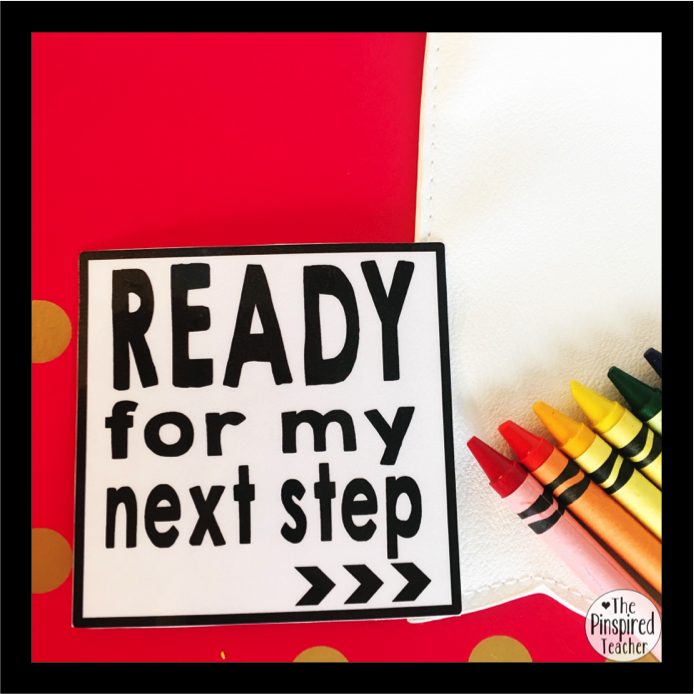
Give the student each step one by one after each one is completed. This reduces the overwhelm and makes the work manageable. I do this in my class by giving my student a “Ready for the Next Step Card.” If there are 4 steps, you can give them 4 of these cards, that way they have an idea of how many steps they will be doing. I LOVE this strategy WITH the next step cards. Before using the next step card, I would get interrupted by my student who would barge into my small group’s conversation saying, “I’m ready for my next step!” Now with the card, they can silently slide it over to me, and I then I can give them their next step and send them on their way in the most non-intrusive way.
23. Have a Go-To Work Zone
Timing is everything.
24. Allow additional time for an assignment.
25. Build in extra time.
Give the assignment when you know the student will have mooore than enough time to work on it. If it’s a repeatable task, decrease the amount of time given as the student improves. I use this strategy when a student struggles with getting their work done AND with transitional tasks like packing up for dismissal.
26. Create a “No Hurry” Classroom Environment.
With the pressure to fit everything in, I catch myself all. the. time. telling my students to “finish up quickly, we have to move on.” I sometimes even grow frustrated and show it. *face palm*
For your kiddo who struggles with getting their work done, this can create anxiety & overwhelm, especially if you are stressed. My best tip is to try your hardest not to let the students feel the pressure you’re feeling. Have a plan for those who aren’t finished and state it calmly. “If you aren’t finished, put it in your keep working folder. After snack, you will have time to finish.”
27. Use a timer.
This creates a sense of urgency. Some kids work well under pressure. Some kids have no sense of time. Using a timer can make all the difference. This might sound contradictory to the tip above this one, but no kid is the same. This will be a miracle for some and a nightmare for others.
28. Be clear about the time the student has to complete the work.
Before the students begin their work, let them know how much time they will have to work on it.
29. Help the student develop a better sense of time. 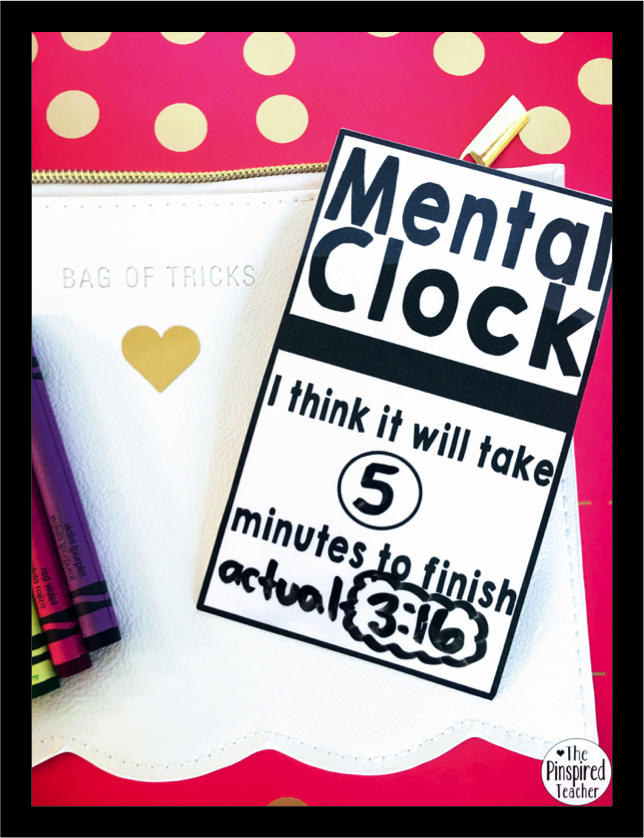
I use these Mental Clock cards with my students. Often times, they don’t even want to get started and their mind sees it as this huge task that will take decades to complete. Once I started having one of my students mentally estimate the time it would take, he realized that he was much faster than he originally thought. This strategy alone helped turn one of my students completely around.
30. Give verbal time reminders.
Give verbal time reminders by saying “You have X minutes to finish.” The best times for reminders are halfway through the work time and also a 5 or 10-minute reminder, and a finally a 1-minute reminder. I also prompt with tips like, “You have 20 minutes left, by now you should be at….”
31. Does the student have trouble getting started?
If your student needs help getting started with their task, tell the student they have X minutes to get started working. You could use a sand timer and tell them that by the time it runs out they need to be working (then hand them a work expectations reminder. 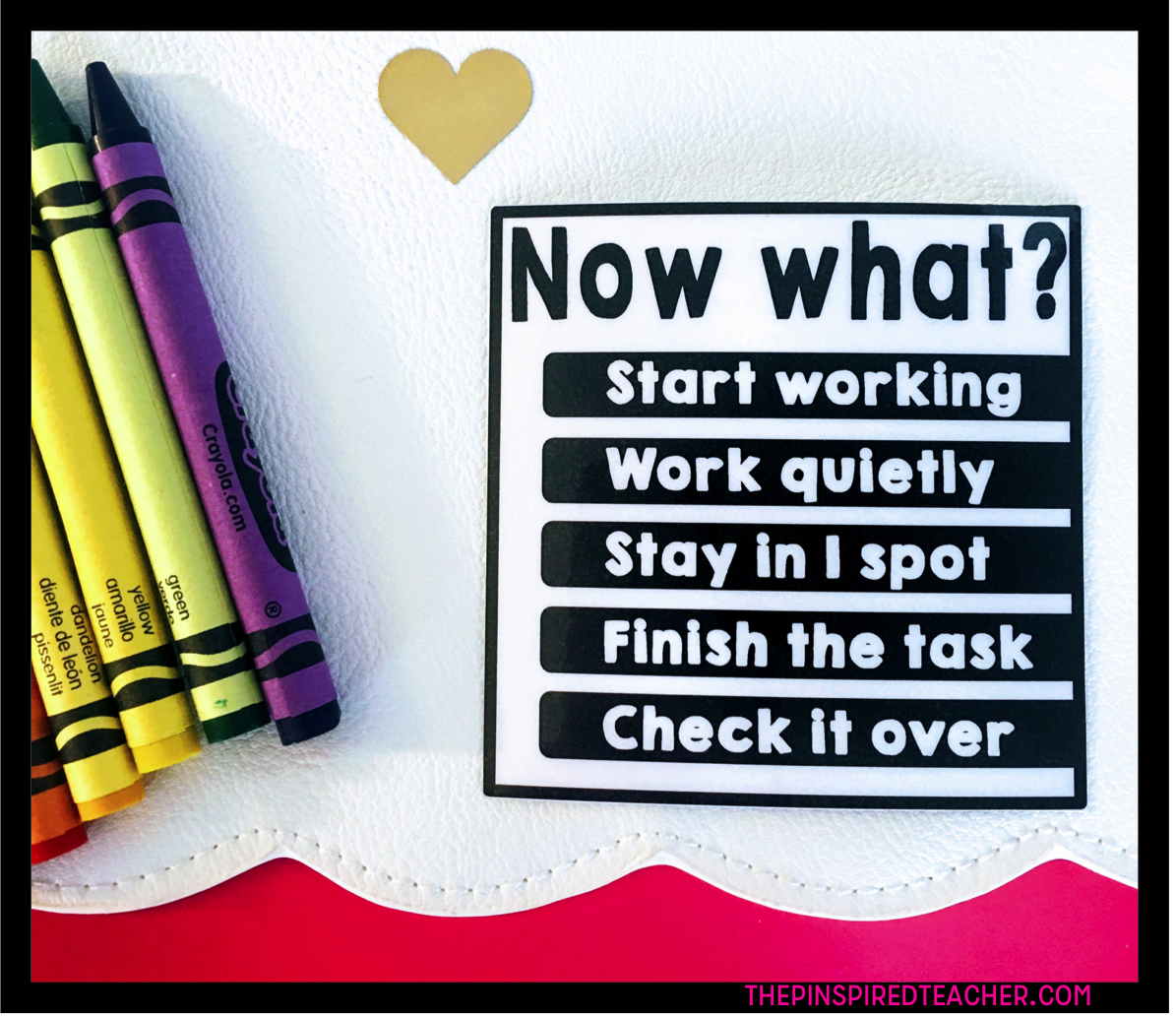
32. Start and stop dots.
Mark a student’s work with clear starting and stopping points. You can use green and red markers as clear start and stop points. I’ve found this especially helpful for writing when a student is staring at a blank page.
33. What’s your definition of DONE? 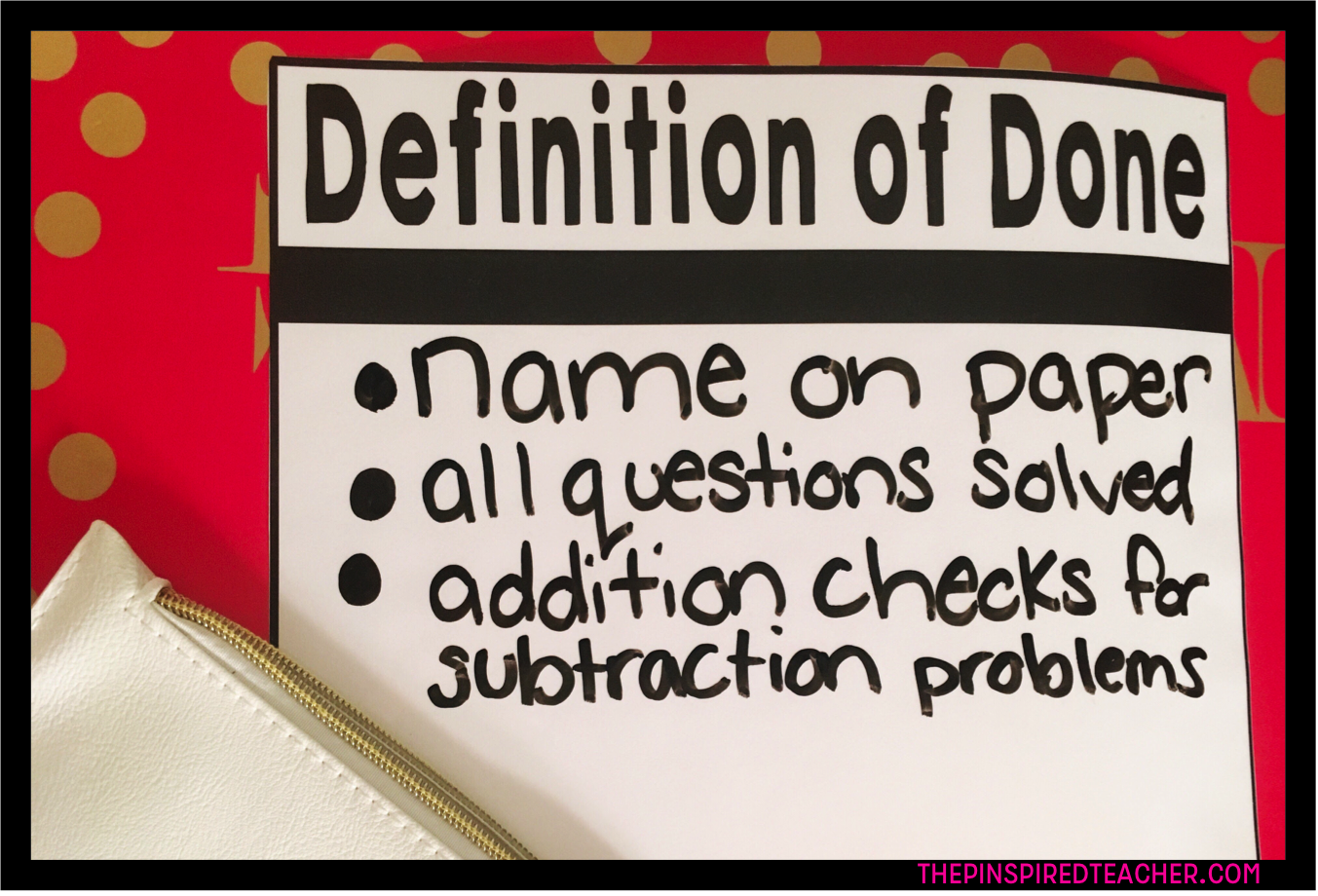
I bet it’s different than your student’s.
How many times does your student say, “FINISHED!” and he still has the entire back side left? Giving your students a clear definition of “DONE” eliminates this. It’s actually quite amazing. You can list out in bullet points what “DONE” means, or even better post student exemplars from years past.
What to do if the student is off task.
34. The “Hawk-Eye” strategy:
Monitor the student to make sure they are on-task. This can be a challenge if you are working with other students, but position yourself so that you can always scan the whole room, especially the student who struggles with getting their work done.
35. The “Check in and Repeat” strategy:
As the student is working, do a quick check in and have her repeat the directions back to you.
36. The “1-2 Off Task” strategy:
This is a quick 2-step strategy. [1] Tell the student what they are doing wrong. [2] Explain what they should be doing. I use these cards as a non-verbal reminder:
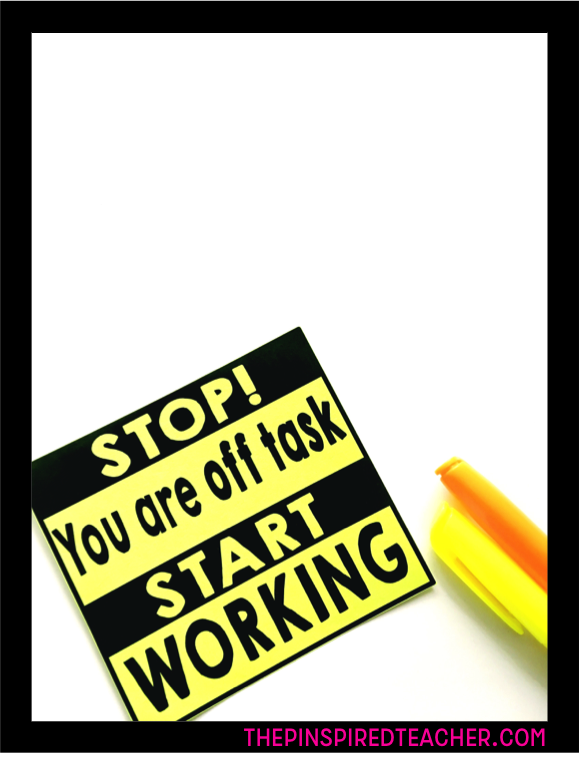
37. The “Proximity” strategy:
You have a powerful presence in the classroom, use it! Stand near the student, you don’t even have to look at the student or talk to the student, just you being close will help refocus them to get back to work.
38. State the natural consequence of being off task.
Make sure the student realizes that if they don’t complete the assignment, then they won’t be able to ________.
39. Hold them Accountable.
I tell my students that if they are wasting their time now, they’ll have to make that time up. I go on to remind them when they are available to make that time up, which is usually during recess or during a time when the rest of the class is working on something fun. Once the students know what I mean by their free time I say, “Would you like to work on this NOW, or LATER during your free time?” Oddly enough, I never have kids who choose to do the work during recess? #shocker
40. Amp up the Accountability.
Quick story: I used to work at a school that housed all the students with severe behavior. One day, I sent work to be completed in the behavior resource room with one of my students. He tore the worksheet into pieces. Guess what behavior specialist did? She taped the worksheet back together and made him do it. Not an option. It wasn’t immediate, but he did it. And now he had the luxury of working on a crinkled up, taped up paper instead of that crisp, warm freshly printed paper. He never did that again. So the moral of the story, hold the student accountable.
41. Be Flexible: Allow for work to be completed at various times
Assess the student’s state. If they are very stressed, angry, sad, etc. having them work on the assignment later. I had a student who randomly started crying during an assignment because her mom was out of town that week. Was she using it to avoid doing the work? Maybe. But later, when she calmed down she got it done. Just make sure it doesn’t become a habit for the student. I’m talkin’ once in a blue moon.
42. Work in a Teacher Space
Pull the student to work at your desk. This is another one of my go-to’s for getting students to get their work done. So much so, that some students just come work at my desk because they want to focus. My desk is my small group table so I have the room. It’s astonishing how just being at my desk, with very minimal to no interaction with me can help an off-task student get back on track. Make sure the students know what’s off-limits such as materials or the area behind your desk.
43. Interact frequently.
Be careful not to be the distraction, but some students need more interaction to stay on task. Ask questions about their work, like “What’s your next chapter going to be about?” Keep the conversation about the assignment. Keep it short and pop in and out.
44. Give a head start.
Some students need help to hit the ground running. Do this by pulling them to your table and working the first part of the assignment together, then send them back to their seat to work independently.
45. Create consistency.
Keep your daily schedule, routines, and expectations as consistent as possible. For our students who struggle with getting their work done, consistency helps build good habits. The more consistent you are, the more your students will go onto autopilot with their work habits.
46. Give positive reinforcement.
I start off very simple, using my If Then contract to praise the student for their efforts. Something as simple as a fist bump or an exaggerated goofy wink can easily heighten the student’s sense of accomplishment.
47. Pacing your positive reinforcement.
Slowly start to increase the amount of work the student needs to complete before they receive any kind of reward or praise. The goal is to wean them off slowly.
48. Enlist peer helpers.
Allow other students to help your kiddo with the task. I place this helper tag on the student’s desk.
49. Track student growth as a motivation tool.
Focus on progress, not perfection.
DONE DICE: 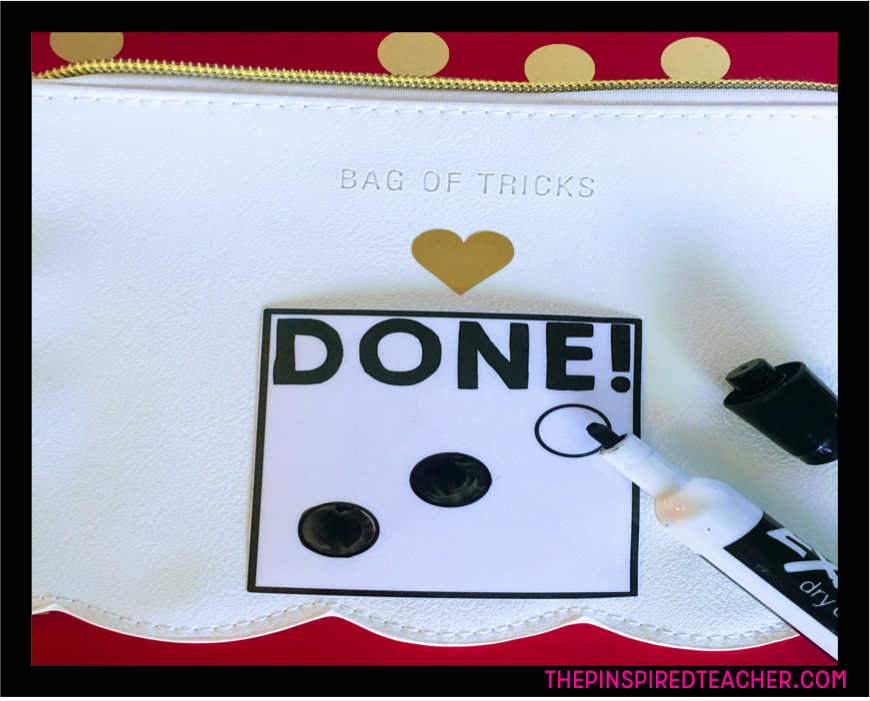
Have the student keep track of how many assignments have been completed. Think about any time you have started to lose weight, doesn’t it get addicting to check to see how many pounds you’ve lost and then you become even more motivated to keep going? Kids are the same. I use DONE DICE cards to help a student track how many assignments they complete. Each Done Dice card has dots 1-6. I start the student out with the one dot card. When the student is done, they color in the dot. I make a big deal out of it. After a couple successful days with one dot, I may drop a hint that they might be ready for two dots! Other times I use a Done Dice card that matches the number of assignments they will need to complete for the day. They may have 5 things I need them to finish for the day (or week) and each time it’s completed they fill in a dot.
DONEMAN emoji (hangman variation):
You may know, I have an emoji obsession. Each time a student completes an assignment (or part of an assignment) they can add one facial detail to their DONEMAN. 3 is a good goal with the DONEMAN (2 eyes + a mouth).
50. Parent communication:
As your student has some successes, share them with their parents. This will allow the parents to reinforce their efforts at home. Here are is an example of what I use:
51. Assign a helper.
Sometimes students are motivated by peer assistance. I print out helper tags to designate a special helper to assist the student struggling to complete their work.
Well, that’s everything I have in my personal bag of tricks for getting students to complete their work during class time.
YOU MAY ALSO LIKE:
